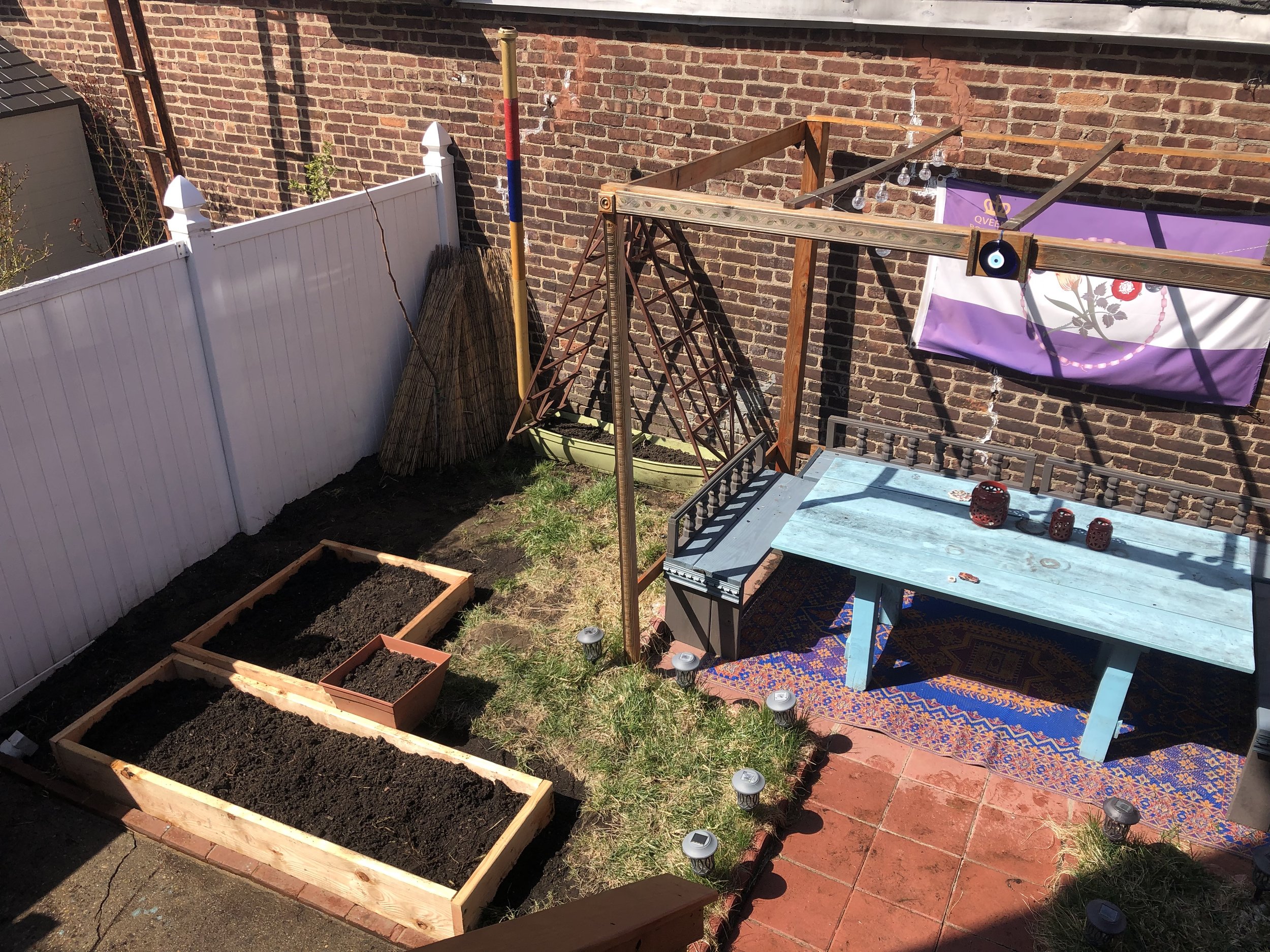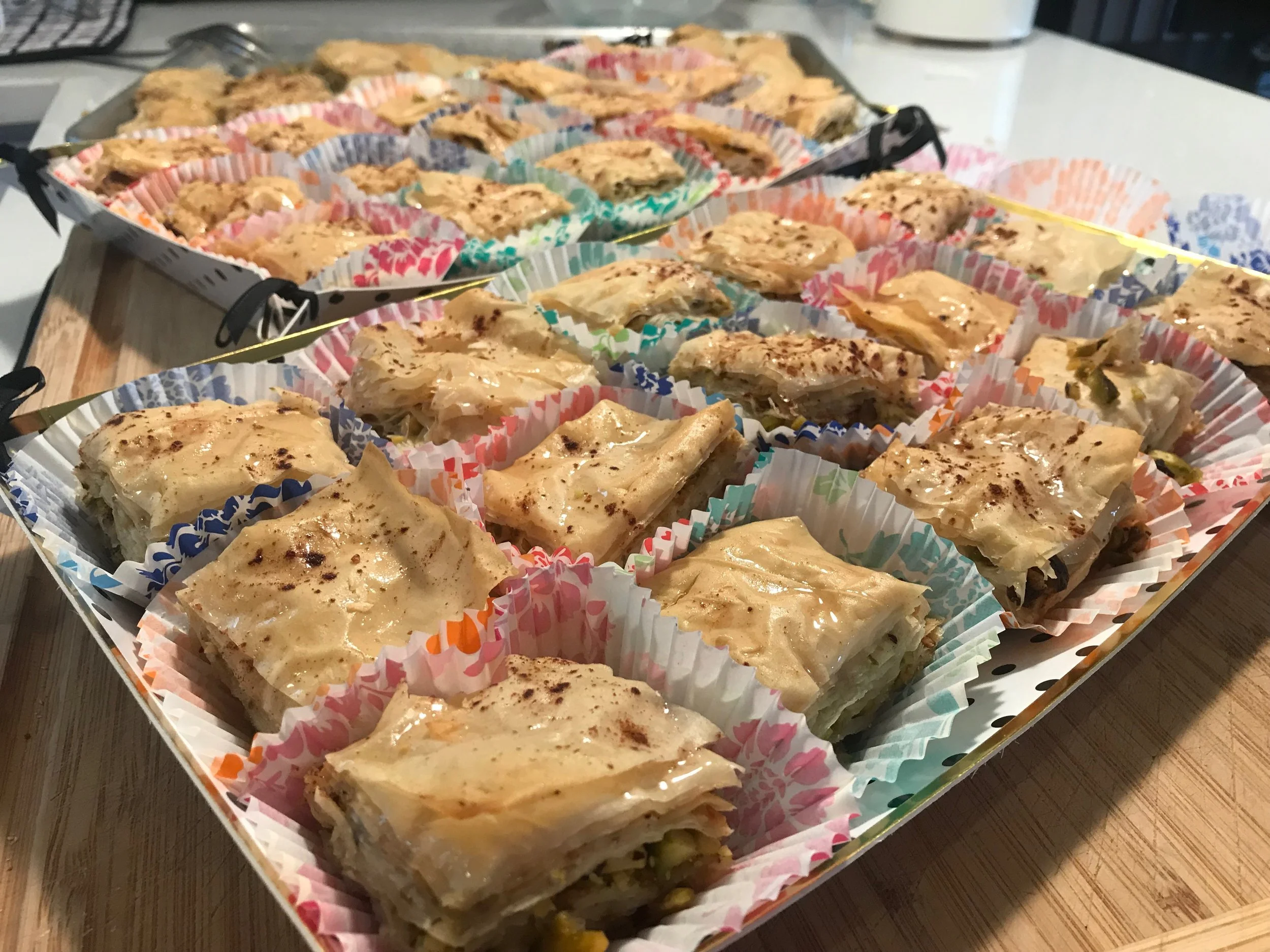Earth Day 2019

In honor of Earth Day, I want to share some of the lifestyle changes I’ve made recently on my new journey to minimalism. There’s nothing earth-shattering here (see what I did there?), but I hope it inspires you to give even a few of these practices a try. Environmental consciousness is something we desperately need and shouldn’t be a passing trend or new year’s resolution.
Minimizing my wardrobe
Last year, I started selling clothes on Poshmark. It’s a great site for rehoming clothes and accessories that you no longer wear but are still in perfectly usable condition. I’ve sold over 100 items and have found some other great pieces from other sellers that I buy with my earnings. You can also cash out at any time. I’m not down to a true capsule wardrobe (a very small limited collection of coordinated items meant to be mixed and matched into many different outfits) since I still like to have a good bit of variety. I did, however, decide in December to pare down my closet dramatically. I tried on practically everything I owned and decided what I could very comfortably live without. These are some of the eco-conscious practices I’ve adopted for parting with my clothes:
Selling: I use Poshmark to sell anything I no longer need if it’s in great condition, never or rarely worn, or an especially popular brand.
Donating: Depending on the size and style, I sometimes send some items to my mom’s school as hand-me-downs for her students. I’ve started to avoid big drop-offs at charity shops like the Salvation Army or Goodwill as my first resort, because these stores often receive more than they can reasonably sell and there’s an unseemly history of excess items getting dumped onto other countries and threatening their economies and environment.
Swapping: I’ll offer clothes or accessories to friends or family if they’re interested. (This is where having a best friend and Mom with the same shoe size comes in handy!) I also found a great series of community Stop n’ Swap events in Queens, where you can drop off all kinds of clothing and home goods and leave with new treasures others have brought.
Recycling: The NYC Greenmarket is one venue I’ve found for donating used or damaged clothes. They try to repair and resell as much as possible, and whatever can’t be salvaged gets repurposed into things like insulation or stuffing. There are similar local drop-off sites for shoe recycling.
Of course after eliminating all this excess, the last thing I want to do is go on a shopping spree and buy it all back. Here are some of the new standards I’ve set myself to this year to be a more responsible consumer of fashion:
Based on the items I have left in my wardrobe, I made a wishlist of things I don’t have or that I want to upgrade, and I’m limiting any fashion purchases not on the list.
I set a goal to cut my annual spending on clothes by at least a third. I keep track of where my money goes and monitor it over time to make sure I’m not getting out of hand.
Buy from thrift stores and online thrift sites like Poshmark as much as possible. So much clothing goes to waste and I’d much rather give something a new home than support the cycle of excessive buying that leads to infinite tons of fabric ending up in landfill before it’s gotten its full use.
Research and shop eco-friendly and ethical brands as much as possible. Cut out stores and brands that aren’t. The fast fashion industry is criminal in terms of overproduction and poor labor and supply chain practices. I’d rather spend $100 on one well-made responsibly produced item than a “haul” of 10 flimsy items made in a sweatshop that barely last me a year. This means a lot less shopping for hobby’s sake.
Extreme decluttering
After cutting my closet down by over 100 items in January, I challenged myself to eliminate other unnecessary items from my house every day for a month straight. In fact, I was on a roll and went over by about 10 days. The challenge was 1 item on Day 1, 2 items on Day 2, all the way up to 30 items on Day 30. In the end, I wound up having decluttered over 840 items, big and small. Generally, the types of things I decluttered were:
Excessive duplicates of things we have enough of
Used so rarely we wouldn’t miss them
Damaged beyond repair
Done serving their purpose in our lives
Again, please declutter responsibly. Try to find a new use or home for something before carting it off for donation or throwing it away.
If you need some motivation, read some Marie Kondo, watch her on Netflix, or find some other inspiring folks on Youtube. One of the channels I’ve found especially insightful and entertaining is A Small Wardrobe.
Making swaps to reduce waste
Besides getting rid of things I don’t need and curbing the impulse to go out and reaccumulate, these are some other things I’ve done for years or have started doing recently to make my lifestyle less wasteful:
Creating a “no buy” list and a list of sustainable brands to keep in mind when I do need to shop
Going paperless with bills, receipts, etc. as much as I can control
Using Green Mountain Energy as our home energy provider
Limiting new book purchases and supporting my local libraries
I’ve never learned to drive or bike, but I try to avoid cabs or ride share services as much as possible and get around by foot or public transportation.
Reducing the amount of plastic packaging in my bathroom by switching to products like soap, shampoo, and conditioner in bar form
Using extra large bottles of multi-purpose castile soap to reduce the needs for lots of smaller containers of body, hand, and home cleaning soaps
Replacing my disposable shower poufs with a washcloth and natural wood body brush
Using a bamboo toothbrush
Switching to organic cotton pads (Target carries a lot of options for these now!)
Cleaning and recycling my old mascara wands with Wands for Wildlife
Switching to natural hygiene products like Schmidt’s deodorant and Dr. Bronner’s toothpaste
Choosing natural instead of synthetic vitamins whenever possible
Reusing or cutting old bath towels into cleaning rags
Being mindful of bringing in good quality sustainable options like organic cotton or tencel when replacing any old towels, linens, or clothes
Using cold wash for laundry, hand washing delicates, and bring dry-clean only items to a green dry cleaner
Using washable cloth napkins instead of paper towels or napkins on a daily basis
Cleaning kitchen surfaces with reusable towels instead of paper towels
Storing food with beeswax food wraps instead of plastic wrap or aluminum foil (or reusing clean aluminum foil)
Using organic cotton face wipes for cleansing and completely eliminating disposable makeup wipes and cotton rounds
Using reusable food storage bags or boxes in place of zip lock bags
Shopping (for groceries or otherwise) with reusable canvas tote bags and mesh or cotton produce bags to eliminate the need to bring home more plastic bags
Buying in bulk as much as possible and using mason jars for food storage
Reusing plastic bags we do still accumulate for trash collection or dropping them off at local grocery stores that have dedicated plastic bag recycle bins
Getting seasonal local produce from our local CSA Brooklyn Grange
Eating less meat
Composting our produce scraps, egg shells, and coffee grinds in our backyard compost turner and using it to fertilize our summer vegetable garden
Freezing clean vegetable and herb trimmings for stock
Buying and preparing dry beans in our Instant Pot to limit the waste of individual canned servings
Shopping at farmers’ markets and greengrocers for produce or looking for unpackaged options if buying from a supermarket
Cutting down plastic food containers in favor of stainless steel and glass options
Limiting purchases of bottled water and using a stainless steel refillable bottle daily
Using stainless steel reusable straws instead of disposables
Refusing disposable cutlery, napkins, etc. when buying lunch or ordering take-out. Whenever I do get stuck with these unwanted items, I donate them to the kitchen at work rather than throwing them away.
Keeping and washing a set of real dishes and cutlery at work
Please comment down below if you have any other recommendations for me to try!




